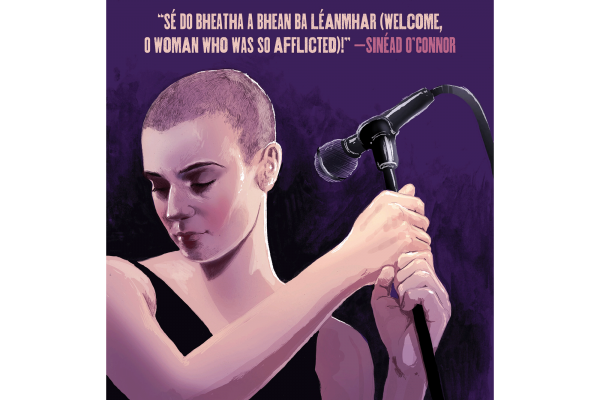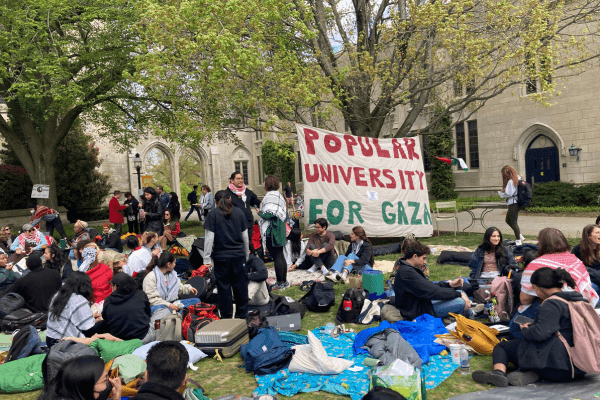El Paso’s vibrant life was abruptly interrupted this past Saturday. Twenty-two people were killed, 26 were injured, and Latinx communities everywhere were reminded that brown-bodied people in this country are often perceived as something to be eliminated through deliberate acts of violence.
And although we come from a multitude of identities, histories, skin colors, and cultures, we are united by so many beautiful things. We are also united by the perceived threat that we are to this nation. This threat of extermination lives in our bones and now feels much more real. We are not ok.
Deep fear has set in Latinx communities all over the country. Latinx friends in Texas feared going to church on Sunday. They continue to fear for their children at school and for their relatives with darker skin who live in border towns. We are experiencing the horrifying consequences of validating this narrative against Latinx and brown-bodied people through intentional mockery, constant questioning of our presence in the country, and violent incidents.
My body ached as I flew back from El Salvador this week knowing that I would land in a country where people like me had just been killed. And my fears were not unfounded. When I landed in the U.S., a Customs and Border Patrol Officer screened my Mexican passport chanting, “Trump, Trump, Trump is the best president we’ve ever had.”
Standing in front of him in my brown body, I was afraid. In the midst of the violence our community has experienced, this chant was a form of intimidation.
Some Latinx people have known — and others have suspected — this land is not safe for us, but the extent to which that suspicion has been confirmed in El Paso is terrifying. The perpetrator in this massacre was deliberate in his plan to counter the “Hispanic invasion.” It’s tempting to believe all this has been incited by the current president’s violent rhetoric. But while that rhetoric has added much fuel to the fire, the fire has been burning for a long time.
In 1848 when the U.S. took over Indigenous and Mexican lands in the Southwest, Mexican people living in those areas were given a choice to become U.S. citizens or leave. The requirement to become a U.S. citizen in order to remain in the land was a call to assimilation. To legally change one’s allegiance to a new country is one thing, but the greatest demand of becoming a citizen was — and is — to become white, to perceive the greatness of this country lies in its white homogeneity. This ideology ensures that certain groups will always be permanent outsiders and, therefore, threats. The fire has been burning for a long time.
Those who have been unable to assimilate are harassed, intimidated, or violently eliminated. For Latinx people in the Southwest, particularly in Texas, this first came in the form of lynchings that started in the mid-19th century and well into the 20th. Mexicans accused of witchcraft, cheating at cards, or theft lost their lives at the hands of vigilantes, local police, and the Texas Ranger Division — a law enforcement group in Texas. During the period of La Matanza (The Massacre) of 1915, violence against Mexican Americans and Mexicans in border towns escalated, leaving hundreds and possibly thousands of ethnic Mexicans dead.
These incidents were not well documented because there has always been confusion as to where brown people belong. Sometimes we have become invisible in the white and black divide. And sometimes we have been lumped in with white people; in either case these deaths go largely unnoticed. The fire has been burning for a long time.
Our bodies carry the trauma of centuries of oppression and racist sentiments toward Latinx people. Violence against us has been a norm in this country no matter our immigration status because the fight is against our brownness; it’s our very skin that is rejected and found threatening. During the Great Depression, close to 2 million Mexican people were deported to Mexico and about half of them were U.S. citizens. They were “sent home” without due process because of the narratives that portrayed them as people who took jobs and benefits that should go to white Americans. But this country was their home. The fire has been burning for a long time.
The creation of the Bracero Program in 1942 invited 4.6 million Mexican guest farm workers to the country. Employers were required to pay a fair salary to them but many employers circumvented the law. Desiring to pay lower wages and unable to guarantee fair treatment, these employers hired hundreds of thousands of undocumented immigrants. With the increased presence of Mexicans came more antagonistic attitudes. In 1954, Operation Wetback rallied more than a million Mexicans across the country in military style and deported them across the southern border. Citizens and guest workers were among those deported. The fire has been burning for a long time.
And yesterday, the sweeping raids in Mississippi where more than 600 undocumented immigrants were arrested at several food processing plants, show us how the fire still burns.
Today, Empire offers Latinx people the same choice: assimilate or leave — assimilate or face war against your bodies. To exist in our brown bodies is a threat to white supremacy.
But we have another choice, a way to fight the fire of injustice that has been burning for generations: to exist in our brown bodies as a beautiful act of resistance — a testament to the resilience of Latinx people throughout the centuries. Yes, we need to call on Congress to act and advocate to end gun violence. But we also need to be committed to living, defending our lives and the lives of others who are sought for destruction.
Communities in El Paso are living this act of resistance. They organized vigils to honor those who were killed. Songs like “Amor Eterno,” an iconic Mexican song, filled the air with the hope of one day being reunited with loved ones. Poet and Sojourners columnist Carolina Hinojosa-Cisneros is leading a caldo drive to take this comforting soup to communities that bear the impact of white supremacy. In a place where Latinx people are seen as threats to be destroyed, life-giving actions should be celebrated: mourning with our loved ones, sustaining our lives, advocating for justice, staying together, and caring for others all serve to preserve life.
Yes, threats of annihilation live in our bones, but so does life, radiating from many generations. Our ancestors were resilient and fought for life and we must also lean into life fiercely.
The fire has been burning for a long time. Will we put it out?
Got something to say about what you're reading? We value your feedback!







